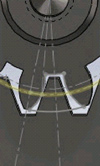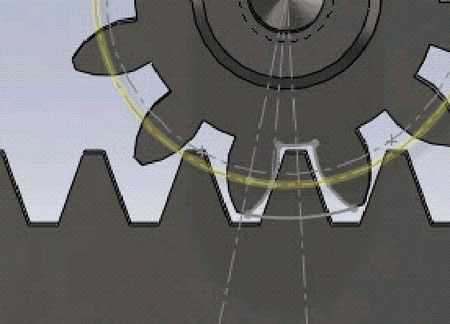Rockers
 The previous rockers article in RET-Monitor looked at the important matter of component stiffness; with the advent of the now widely used Spintron testing, engineers began to see the value of increased rocker stiffness when considering the ability of the valvetrain to remain under control.
The previous rockers article in RET-Monitor looked at the important matter of component stiffness; with the advent of the now widely used Spintron testing, engineers began to see the value of increased rocker stiffness when considering the ability of the valvetrain to remain under control.
The same reasons that pushed people along the development path of increased pushrod stiffness also led them to consider again the use of steels and other high-stiffness materials for rocker manufacture. Beyond material changes and the inevitable geometric changes that come from having used a new material, there are a number of other changes that can be made to improve the stiffness of the assembly, and which lend themselves in particular to the use of steel.
An obvious target for improvements in stiffness coupled with mass reduction is to remove the adjuster from the pushrod side of the rocker, which many people have done. While this brings with it the need to carry a greater inventory of parts to cope with the range of tolerances on other pieces, it is a worthwhile venture. At the opposite end of the pushrod, it is possible to dispense with the roller bearing which runs on the lash cap. The bearing itself has some flexibility, as does the shaft that carries it and the portions of the rocker supporting the shaft. By running the rocker tip directly on the lash cap, the stiffness of the rocker can be increased.
There are some people in NASCAR who have run this system with success. The form of the contacting tip needs to be carefully considered if it is not to have an excessive rate of sliding as it operates the valve. Excessive sliding can cause lateral forces on the valve, which introduce friction and extra complication when trying to control the valve.
The form of the rocker tip used for this system takes cues from the finger follower designs used in recent Formula One engines, being based on an involute profile; this reduces sliding by making the contact one that primarily experiences a rolling action, similar to a gear acting on a rack, which is the other main application for involute profiles acting against flat surfaces. With high-strength steels and the use of modern, hard, low-friction coatings such as DLC, high levels of contact stress can be withstood. Rockers that operate without a roller can be made lighter than a roller-rocker with equivalent stiffness, or can be made stiffer for the same mass as a roller rocker.

It is also possible with careful consideration to remove the roller bearing at the rocker pivot. Again, this can stiffen and lower the mass of the rocker. Careful thought needs to be given to lubrication of the contact and to the materials used, as well as the correct clearance. The main technical problem here is that a supply of pressurised oil needs to be directed to the contact between the rocker and the shaft. Depending on the position of the existing oil galleries within the head, and the amount of material in the head casting in which to machine the required drillings, this could be a difficult job.
Fig. 1 - The action of a rollerless rocker contacting the lash cap should be similar to the action of a rack and pinion
Written by Wayne Ward